Category: Institutions
13TH CONFERENCE OF PARTIES (COP) OF THE CONVENTION ON THE CONSERVATION OF MIGRATORY SPECIES OF WILD ANIMALS (CMS)
12, Feb 2020
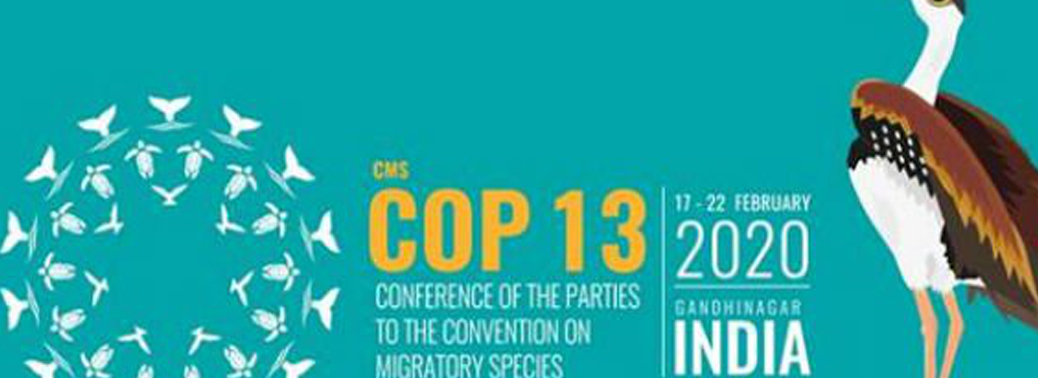
Why in News?
- India will host the 13th Conference of Parties (COP) of the Convention on the Conservation of Migratory Species of Wild Animals (CMS) at Gandhinagar, Gujarat in February 2020.
Highlights:
- As the host, India shall be designated the President for the next three years.
- The Government of India is a signatory to the Convention on Conservation of Migratory wild Animals (CMS) since 1983.
- The theme of CMS COP 13 in India is, “Migratory species connect the planet and we welcome them home”.
- The CMS COP 13 logo is inspired by ‘Kolam’, a traditional art form from southern India. In the logo, Kolam art form is used to depict key migratory species in India like Amur falcon, humpback whale and marine turtles.
- The mascot for CMS COP13, “Gibi – The Great Indian Bustard” is a critically endangered species which has been accorded the highest protection status under the Wildlife Protection Act, 1972.
Great Indian Bustard:
- The great Indian bustard (Ardeotis nigriceps) or Indian bustard is a bustard found on the Indian subcontinent.
- It is a large bird with a horizontal body and long bare legs, giving it an ostrich like appearance.
- It is among the heaviest of the flying birds.
- These birds are often found associated in the same habitat as the blackbuck.
- The Indian subcontinent is also part of the major bird flyway network, i.e, the Central Asian Flyway (CAF) that covers areas between the Arctic and Indian Oceans, and covers atleast 279 populations of 182 migratory water bird species, including 29 globally threatened species.
Convention on Conservation of Migratory wild Animals (CMS):
- As an environmental treaty of the United Nations, CMS provides a global platform for the conservation and sustainable use of migratory animals and their habitats.
- CMS brings together the States through which migratory animals pass, the Range States, and lays the legal foundation for internationally coordinated conservation measures throughout a migratory range.
- It is the only global convention specializing in the conservation of migratory species, their habitats and migration routes.
- Migratory species threatened with extinction are listed on Appendix I of the Convention.
- CMS Parties strive towards strictly protecting these animals, conserving or restoring the places where they live, mitigating obstacles to migration and controlling other factors that might endanger them.
- The Convention entered into force on 1 November 1983.
- Its Secretariat is in Bonn, Germany.
UN CLIMATE CHANGE CONFERENCE
28, Nov 2019
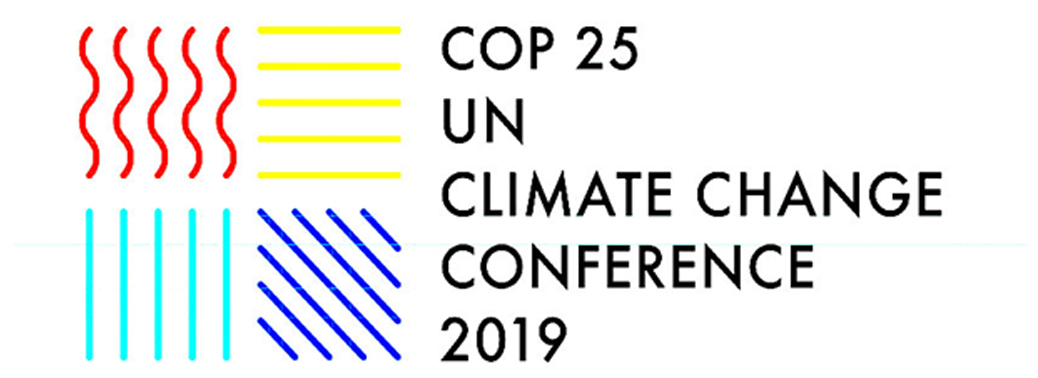
Why in News?
- Cabinet approves India’s Approach to the UN Climate Change Conference to be held in Spain Next Week.
Highlights:
- The Cabinet has approved India’s negotiating stand at the 25th Conference of Parties (COP) to the United Nations Framework Convention on Climate Change (UNFCCC) scheduled to be held in Madrid, Spain in the first and second weeks of December 2019.
- The COP is being held under the presidency of Chile.
- The Indian delegation is led by the Union Minister for Environment, Forest and Climate Change.
- COP 25 is an important conference as countries prepare to move from the pre-2020 period under the Kyoto Protocol to the post-2020 period under the Paris Agreement.
- India’s approach will be guided by principles and provisions of the UNFCCC and Paris Agreement particularly the principles of Equity and Common But Differentiated Responsibilities and Respective Capability (CBDR-RC).
- Equity and Common But Differentiated Responsibilities and Respective Capability (CBDR-RC):
- It is a principle within the UNFCCC that acknowledges the different capabilities and differing responsibilities of individual countries in addressing climate change.
- CBDR-RC has served as a guiding principle as well as a source of contention in the UN climate negotiations.
- Reflecting CBDR-RC, the Convention divided countries into “Annex I” and “non-Annex I,” the former generally referring to developed countries and the latter to developing countries.
- Under the Convention, Annex I countries have a greater mitigation role than non-Annex-I countries.
India’s Role:
- In the Climate Action Summit convened by United Nations Secretary-General, the Prime Minister announced India’s plan on scaling up of renewable energy target to 450 GW.
- He also called for responsible action by all on the principles of equity and CBDR-RC.
- India has been leading the world in its pursuit of enhanced solar energy capacity through International Solar Alliance (ISA).
- India has also launched the Coalition for Disaster Resilient Infrastructure, which will serve as a platform to generate and exchange knowledge on different aspects of climate and disaster-resilient infrastructure.
- Apart from this, India has launched along with Sweden, the ‘Leadership Group for Industry Transition’ which will provide a platform for government and the private sector in different countries to work together on accelerating low carbon growth and cooperation in the area of technology innovation.
NATIONAL GREEN TRIBUNAL
25, Sep 2019

Context:
- Instead of giving financial and administrative support to the NGT, efforts are usually directed towards diluting its powers, defeating the very purpose behind its creation.
Background:
- Taking into account the increasing number of environmental cases across the country and the involvement of multi-disciplinary issues in such cases, the Government of India enacted the National Green Tribunal (NGT) Act in 2010 for the effective and expeditious disposal of cases relating to environmental protection, conservation of forests and other natural resources.
About National Green Tribunal:
- The National Green Tribunal is Statutory body, established under the National Green Tribunal Act 2010.
- For effective and expeditious disposal of cases relating to environmental protection and conservation of forests and other natural resources including enforcement of any legal right relating to environment and giving relief and compensation for damages to persons and property and for matters connected therewith or incidental thereto.
- It is a specialized body equipped with the necessary expertise to handle environmental disputes involving multi-disciplinary issues.
- The Tribunal shall not be bound by the procedure laid down under the Code of Civil Procedure, 1908, but shall be guided by principles of natural justice.
Handling Complex Issues:
- To address complex environmental cases, Section 4 of the NGT Act prescribes that the tribunal shall consist of a full-time chairperson and at least 10, but not exceeding 20 judicial and expert members at all times.
Jurisdiction:
- Section 14, 15 and 16 of the Act state that
- The tribunal shall have the jurisdiction over all civil cases where a substantial question relating to environment is involved,
- Provide relief and compensation to the victims of pollution and other environmental damage arising under the environmental acts, and
- Hear appeal from any person aggrieved by any order or decision related to environmental matters.
Administrative Problems:
- A less obvious but critical aspect of the NGT’s efficient functioning, which can significantly impact the decision-making process and access to justice, concerns the administrative support supplied by the Government of India.
- However, from the very beginning, the Government of India has not been enthusiastic to see NGT function as an effective body.
- In the absence of basic infrastructure facilities and human resources, three judicial members submitted their resignations between 2012-13.
- This led to the intervention of the Supreme Court in 2012 in directing the Union Ministry of Environment, Forest and Climate Change (MoEF&CC) to provide basic facilities so that the NGT members continue in the bench.
- Section 4 of the NGT Act, 2010, prescribes that the tribunal shall consist of a full time chairperson and not less than 10 judicial and 10 expert members but subject to maximum of twenty full-time judicial and expert members.
- Issue:
- In the last nine years, the NGT has never got the minimum strength of ten judicial and ten expert members to address the increasing number of environmental litigations across the country.
- Currently, with only four judicial and two expert members, the NGT appears paralysed.
- With no indication of appointment of more judicial and expert members from the MoEF&CC, the four zonal benches have been completely shut over the past one year.
Opinions of Lawyers:
- Many lawyers practicing in the NGT have expressed their discomfort with the video conference hearing which they feel has put enormous cost and burden on their clients.
- Hearings are adjourned or listed in an unfashionable manner, without giving sufficient time to lawyers and clients to present their matter.
- Hearings are adjourned or listed in an unfashionable manner, without giving sufficient time to lawyers and clients to present their matter.
- Lawyers also complain that they hardly get a chance to mention any new matter via video-conference hearing.
- The great majority of cases are not resolved within the stipulated time-period of six months.
Other Issues:
- The scale and nature of environmental litigation has changed drastically over the years, the government has not shown any seriousness in appointing a variety of expert members to address complex environmental problems ranging from nuclear waste to bio-medical wastes to hazardous wastes.
- For example, out of the 13 expert members appointed between 2010-2018, four are from Indian Forest Service and two are from Indian Administrative Service.
- Complex environmental problems demand special knowledge and expertise.
- In the absence of variety of expert members, decisions, especially those related to the quantum of compensation amount to be paid by the polluter are arrived at without any scientific basis.
- This has resulted in an increasing number of appeals against the NGT’s decisions in the Supreme Court.
- Order implementation
- There are also serious challenges as far as implementation of the NGT orders is concerned. For example, Rule 35 (1) of the Act specifies that the compensation amount as ordered by the tribunal should be remitted to the authority of the Environmental Relief Fund within a period of 30 days from the date of order or award or as otherwise ordered by the tribunal.
- It is observed that the polluters don’t abide by this rule.
- Second, the NGT orders are increasingly challenged in the Supreme Court, where a heavy penalty has been imposed by the tribunal.
- Third, there is no institutional mechanism to ensure that the environmental regulatory authorities comply with the orders of the tribunal.
- Most of the landmark orders of the NGT related to Ganga water pollution, Delhi air pollution, illegal mining, and solid waste management remain unenforced.
Core Concerns:
- Efforts in India have been directed towards diluting the role and function of the NGT.
- Given the current state of the NGT, it is reasonable to claim that the multiple objectives of access to justice, efficiency, cost-efficiency, and protection of the environment through the NGT Act, have been defeated.
Way Forward:
- The NGT deserves more attention today than what it has been hitherto.
- The Government of India must realise the risk of pending of thousands environmental litigations in zonal benches to its ambitious economic growth target and policy to lure investors.
- The government needs to provide adequate financial and human resources — if it does not want the NGT to wither away.
CITES WASHINGTON CONVENTION
26, Aug 2019
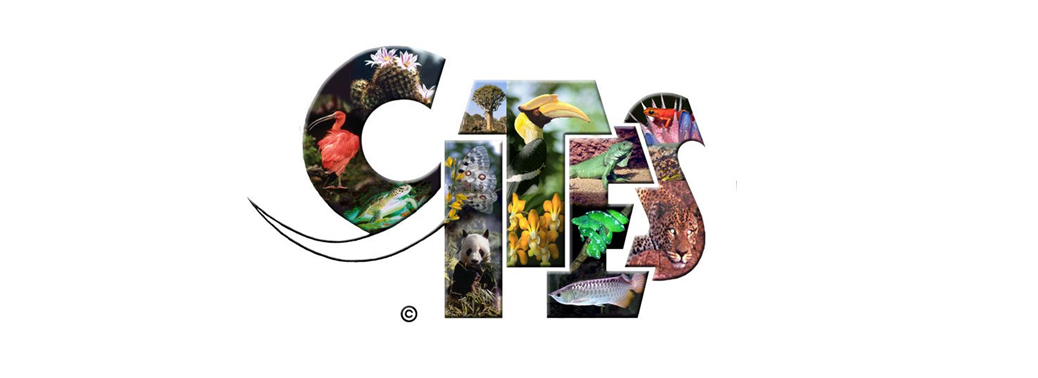
Why in News?
- A resolution calling for Japan and the European Union (EU) to close their legal domestic ivory markets was not adopted at the ongoing 18th Conference of Parties (CoP18) to the Convention on International Trade in Endangered Species (CITES) in Geneva on August 21, 2019.
CITES:
- The Convention on International Trade in Endangered Species of Wild Fauna and Flora is an International agreement to regulate worldwide commercial trade in wild animal and plant species.
- It restricts trade in items made from such plants and animals, such as food, clothing, medicine, and souvenirs.
- It was signed on March 3, 1973 (Hence world wildlife day is celebrated on march 3).
- It is administered by the United Nations Environment Programme (UNEP).
- Secretariat— Geneva (Switzerland).
- CITES is legally binding on state parties to the convention, which are obliged to adopt their own domestic legislation to implement its goals.
- It classifies plants and animals according to three categories, or appendices, based on how threatened. They are.
- Appendix I: It lists species that are in danger of extinction. It prohibits commercial trade of these plants and animals except in extraordinary situations for scientific or educational reasons.
- Appendix II species: They are those that are not threatened with extinction but that might suffer a serious decline in number if trade is not restricted. Their trade is regulated by permit.
- Appendix III species: They are protected in at least one country that is a CITES member states and that has petitioned others for help in controlling international trade in that species.
INTENDED NATIONALLY DETERMINED CONTRIBUTIONS
22, Aug 2019

Why in News?
- Countries across the globe committed to create a new international climate agreement by the conclusion of the U.N. Framework Convention on Climate Change (UNFCCC) Conference of the Parties (COP21) in Paris in December 2015.
- In preparation, countries have agreed to publicly outline what post-2020 climate actions they intend to take under a new international agreement, known as their Intended Nationally Determined Contributions (INDCs).
Highlights:
- The INDCs will largely determine whether the world achieves an ambitious 2015 agreement and is put on a path toward a low-carbon, climate-resilient future.
- India has submitted its Intended Nationally Determined Contribution (INDC) to the United Nations Framework Convention on Climate Change.
Salient Features of India’s INDC:
- To put forward and further propagate a healthy and sustainable way of living based on traditions and values of conservation and moderation.
- To adopt a climate-friendly and a cleaner path than the one followed hitherto by others at corresponding level of economic development.
- To reduce the emissions intensity of its GDP by 33 to 35 per cent by 2030 from 2005 level.
- To achieve about 40 per cent cumulative electric power installed capacity from non-fossil fuel-based energy resources by 2030, with the help of transfer of technology and low cost international finance, including from Green Climate Fund.
- To create an additional carbon sink of 2.5 to 3 billion tonnes of CO2 equivalent through additional forest and tree cover by 2030.
- To better adapt to climate change by enhancing investments in development programmes in sectors vulnerable to climate change, particularly agriculture, water resources, Himalayan region, coastal regions, health and disaster management.
- To mobilize domestic and new and additional funds from developed countries to implement the above mitigation and adaptation actions in view of the resource required and the resource gap.
- To build capacities, create domestic framework and international architecture for quick diffusion of cutting-edge climate technology in India and for joint collaborative R&D for such future technologies.
GLOBAL ASSESSMENT OF FOREST BIODIVERSITY BY WWF
18, Aug 2019

Why in news?
- The World Wide Fund for Nature (WWF) has released the first-ever global assessment of forest biodiversity.
Key Findings:
- There has been a 53% decline in the number of forest wildlife populations since 1970.
- Of the 455 monitored populations of forest specialists, more than half declined at an annual rate of 1.7 per cent, on average between 1970 and 2014.
- While the decline was consistent in these years among mammals, reptiles and amphibians (particularly from the tropical forests), it was less among birds (especially from temperate forests).
Threats:
- Loss of habitat due to logging, agricultural expansion, mining, hunting, conflicts and spread of diseases accounted for almost 60 per cent of threats.
- Nearly 20 per cent of threats were due to over exploitation. Of the 112 forest-dwelling primate populations, 40 were threatened by overexploitation (hunting).
- Climate change, on the other hand, threatened to 43 per cent of amphibian populations, 37 per cent of reptile populations, 21 per cent of bird populations but only 3 per cent of mammal populations.
- Climate change, on the other hand, threatened to 43 per cent of amphibian populations, 37 per cent of reptile populations, 21 per cent of bird populations but only 3 per cent of mammal populations.
CITES
11, Aug 2019

Why in News?
- India has submitted proposals regarding changes to the listing of various wildlife species in the CITES secretariat meeting, scheduled later this month in Geneva, Switzerland.
CITES:
- CITES (the Convention on International Trade in Endangered Species of Wild Fauna and Flora) is an international agreement between governments. Its aim is to ensure that international trade in specimens of wild animals and plants does not threaten their survival.
- The species covered by CITES are listed in three Appendices, according to the degree of protection they need.
- Appendix I includes species threatened with extinction. Trade in specimens of these species is permitted only in exceptional circumstances.
- Appendix II includes species not necessarily threatened with extinction, but in which trade must be controlled in order to avoid utilization incompatible with their survival.
- Appendix III contains species that are protected in at least one country, which has asked other CITES Parties for assistance in controlling the trade. Changes to Appendix III follow a distinct procedure from changes to Appendices I and II, as each Party’s is entitled to make unilateral amendments to it.
How New Species are added into the CITES list:
- The Conference of the Parties (CoP), which is the supreme decision-making body of the Convention and comprises all its Parties, has agreed on a set of biological and trade criteria to help determine whether a species should be included in Appendices I or II. At each regular meeting of the CoP, Parties submit proposals based on those criteria to amend these two Appendices. Those amendment proposals are discussed and then submitted to a vote. The Convention also allows for amendments by a postal procedure between meetings of the CoP, but this procedure is rarely used.
- Changes to Appendix III follow a distinct procedure from changes to Appendices I and II, as each Party’s is entitled to make unilateral amendments to it.
Proposal:
- The proposals submitted are regarding changes in the listing of the smooth-coated otter, small-clawed otter, Indian star tortoise, Tokay gecko, wedge fish and Indian rosewood.
- The country seeks to boost the protection of all the five animal species as they are facing a high risk of international trade.
- For the Indian rosewood, the proposal is to remove the species from CITES Appendix II. The species covered by CITES are listed in three appendices on the degree of protection they require.
- India is among the parties proposing the re-listing of the star tortoise from CITES Appendix II to Appendix I. The species faces two threats: loss of habitat to agriculture and illegal harvesting for the pet trade.
- With regard to the two otter species, India, Nepal and the Philippines have proposed that the listing be moved from CITES Appendix II to Appendix I for the more endangered species. A similar proposal has been made to include the Tokay gecko in Appendix I.
INTERNATIONAL CONVENTION FOR THE PREVENTION OF POLLUTION FROM SHIPS (MARPOL)
29, Jul 2019
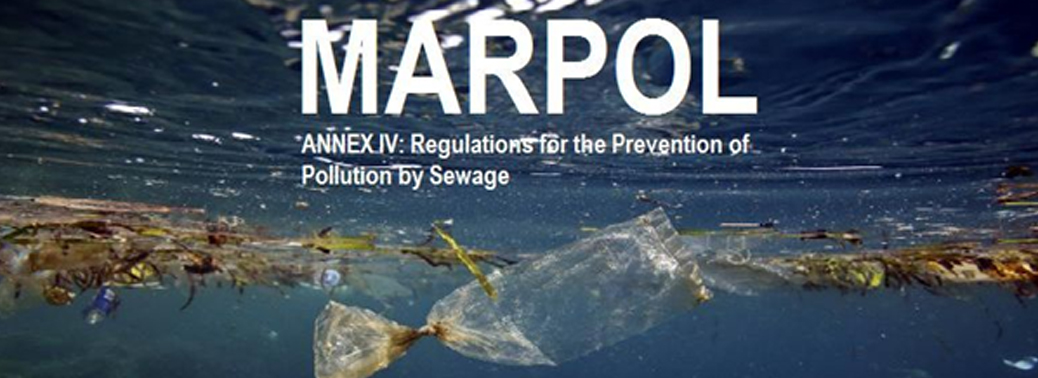
Why in News?
- International Convention for the Prevention of Pollution from Ships (MARPOL) is the main international convention covering prevention of pollution of the marine environment by ships from operational or accidental causes.
- The MARPOL Convention was adopted on 2 November 1973 at IMO. The Protocol of 1978 was adopted in response to a spate of tanker accidents in 1976-1977.
- The Convention includes regulations aimed at preventing and minimizing pollution from ships – both accidental pollution and that from routine operations – and currently includes six technical Annexes.
India is a signatory to MARPOL.
- Special Areas with strict controls on operational discharges are included in most Annexes.
- Annex I: Regulations for the Prevention of Pollution by Oil
- Covers prevention of pollution by oil from operational measures as well as from accidental discharges; the 1992 amendments to Annex I made it mandatory for new oil tankers to have double hulls and brought in a phase-in schedule for existing tankers to fit double hulls, which was subsequently revised in 2001 and 2003.
- Annex II: Regulations for the Control of Pollution by Noxious Liquid Substances in Bulk
- Details the discharge criteria and measures for the control of pollution by noxious liquid substances carried in bulk; some 250 substances were evaluated and included in the list appended to the Convention; the discharge of their residues is allowed only to reception facilities until certain concentrations and conditions (which vary with the category of substances) are complied with. In any case, no discharge of residues containing noxious substances is permitted within 12 miles of the nearest land.
- Annex III: Prevention of Pollution by Harmful Substances Carried by Sea in Packaged Form Contains general requirements for the issuing of detailed standards on packing, marking, labelling, documentation, stowage, quantity limitations, exceptions and notifications. For the purpose of this Annex, “harmful substances” are those substances which are identified as marine pollutants in the International Maritime Dangerous Goods Code (IMDG Code) or which meet the criteria in the Appendix of Annex III.
- Annex IV: Prevention of Pollution by Sewage from Ships Contains requirements to control pollution of the sea by sewage; the discharge of sewage into the sea is prohibited, except when the ship has in operation an approved sewage treatment plant or when the ship is discharging comminuted and disinfected sewage using an approved system at a distance of more than three nautical miles from the nearest land; sewage which is not comminuted or disinfected has to be discharged at a distance of more than 12 nautical miles from the nearest land.
- Annex V: Prevention of Pollution by Garbage from Ships Deals with different types of garbage and specifies the distances from land and the manner in which they may be disposed of; the most important feature of the Annex is the complete ban imposed on the disposal into the sea of all forms of plastics.
- Annex VI: Prevention of Air Pollution from Ships Sets limits on sulphur oxide and nitrogen oxide emissions from ship exhausts and prohibits deliberate emissions of ozone depleting substances; designated emission control areas set more stringent standards for SOx, NOx and particulate matter. A chapter adopted in 2011 covers mandatory technical and operational energy efficiency measures aimed at reducing greenhouse gas emissions from ships.
WAPCOS
16, Jul 2018
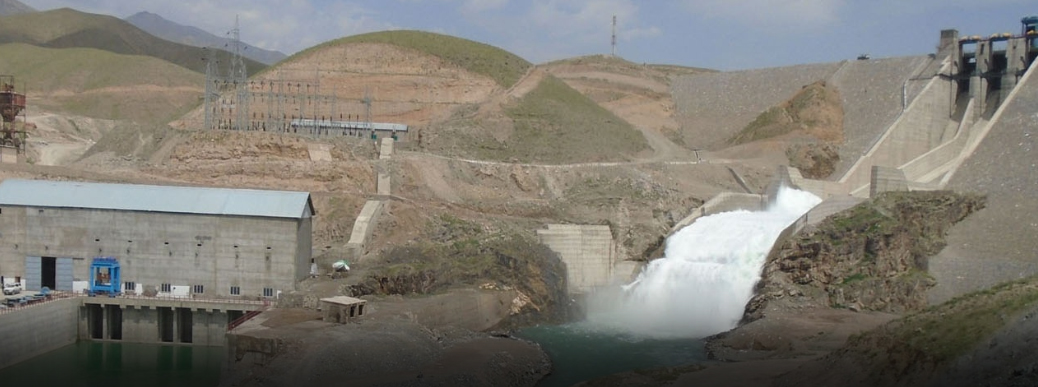
50th Foundation Day of WAPCOS-Water and Power Consultancy Services was celebrated by Union Minister for Water Resources, River Development and Ganga Rejuvenation.
Background
A Public Sector Enterprise incorporated IN 1969 under the Companies act 1956 by GOI.
It is a techno-commercial organization under the aegis of Ministry of Water Resources, River Development and Ganga Rejuvenation
Functions:
- A Global Leader in Consultancy and Engineering, Procurement & Construction (EPC) providing Integrated & Customized Solutions for Sustainable Development of Water, Power and Infrastructure Projects.
- WAPCOS has done Survey & Investigation/Pre-Feasibility/DPRs for more than 550 Projects in Irrigation, Water Resources and Agricultural etc
- The company has contributed in development of over 15 Million Ha irrigation potential; more than 200 projects in ports and inland navigation; over 500 projects in water supply and sanitation, rural and urban development, roads and highway engineering, EIAs for over 250 projects in the fields of irrigation, hydro/thermal power, ports and harbours in India and abroad.
- In the Hydro-Power sector; WAPCOS has completed almost 52 Hydro-Power Projects in 19 countries.
- It has grown into a true Indian multinational with footprints across the globe in line with Government of India’s flagship programmes on “Skill India” and “Make in India”.






